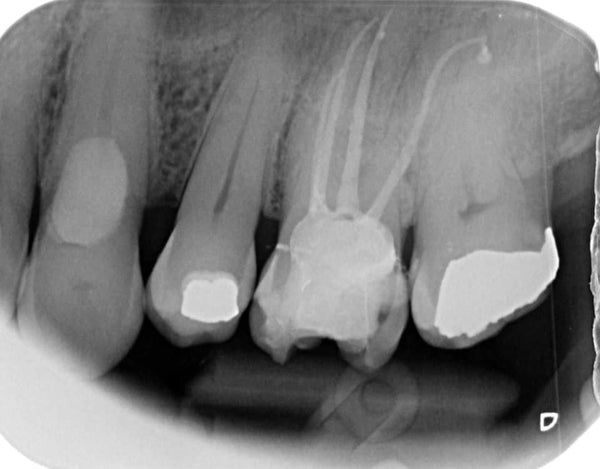Overview Video
Here's a look at the Blue VS Flexi Files and how we recommend to use them in practice.
Video Transcription:
I'm just going to do an introduction of the vs. Flexi blue files so the whole idea behind the vs Flexi blue files is that they're controlled memory files. So, you've got fantastic flexibility, and they don't have a restoring force. So, it's like when you go around a curve, it's going to hold shape.
When you get the packet of vs Flexi files, the first file is the #20 06 orifice opener, this runs at 300 rpm, and 2.2 torque. So, the idea for this canal though was just repositions the canals, you just place it into the canal, activate the instrument, and you're just really trying to reposition the canal and have a little bit of coronal flair. Now, the whole idea of this system is that we preserve the pericervical dentine. So, we don't want to bring this instrument deep down into the canal, just really getting the first three or four millimetres.
Once we've done that, we can bring an #08 or #10 file, if we get to length, then we can start with the #13 04 or five, it's a difficult case. So, what we'll do is we place it passively to length, and in lots of cases, it'll go straight to length, if it's straightforward. If the case is an easy case, then you don't need to use that file at all, you can go straight to the #17 04, #17 04 in this case is just #17 04 the apicals. It's very, very thin, narrow far and a lot of easy cases, this will go to length as well.
If it goes to length, just place it passively into the canals, if it's a little bit short activate it and brush out, activate and brush out. So, in a lot of straightforward cases, this will get to length very, very easily. Then once we've got the #17 04 to length, it's just a matter of what size file, we're going to finish it on. So, we can either finish it on #20 #25 or #30, we're going to have 06 tapers in the last three to four millimetres and then there's a regressive taper there afterwards, we're going to preserve a lot of the pericervical dentine by using this file system. So again, just place the file passively to length.
Once you're at length, activate and remove, and you'll see where the file is cutting by where the debris on the file. So, what I'm trying to figure out what apical size I'm going to finish the preparation on. I'll place the file to length passively. And then I'll activate it and let it feed into the canal and do two to three passes. If it slides easily to length, then we're done. If all the apical flutes are full of debris, and it feels tight in the canal, then your preparations complete.
You can concentrate then on your irrigation techniques then after that, if all the apical flutes have no debris in the middle, then you may consider going to an even bigger apical size. And then we're going to finish this case in #25 06 place the file passively into the canal. Activate and out and you're done. Canal now has been instrumental to #25 06 and the apical three millimetres and there's a regressive taper above that.
Training Video
Case Study

I’m very proud when GDPs send me postop pa’s where they have successfully managed complex anatomy using some of the materials and strategies that we are encouraging. Distal buccal canal “easily negotiated with vs flexi files”. Control memory files have excellent flexibility. You can mix and match systems depending on the requirements of the case. For me 13/4 gold and 17/4 blue should be default for all complex cases. Will save you so much time.
Case Study 2

here are two from today. Mantra of the day "please don't break, please don't break". Both with s shaped curves and ideal to put the vs flexi blue files to test. First up an ul6. Periodontal treatment complete and stabilised now. Necrotic case with her of acute flare up a few months ago. Used the existing filling as a guide to orientate the access cavity. Numerous pulp stone encounted. Prepared DB and P first and let the MB soak in NaOCL whilst doing so. Inspired by Thibaut Merit I went as low as 20/06 in the MB root system. 25/06 for P and DB. Irrigation with full strength hypochlorite and endosolution and irriflex tips. Endoactivator yellow. Microsuction to dry the canals. Placed total fill sealer and fed this to the length of the canal using a 25/029 gp point. Decided to customise 20/029 for the MB and 25/029 GP DB with a taper plate and MF GP for the palatal. Luxacore to seal.
Case Study 3

Vs flexi blue.
Case Study 4

Case Study 5

Had a play about with the tooth saver VS flex files today and managed to prepare this to a 25/4. I tried to rest the files and went from a loose size 8 in the MB canal to the 13/4, 17/4 and then the 25/4. The DB started with the size 8 being quite passive to length apart from the apical third, so I went straight to a 17/4 to see how it performed and it was straight forward. Moving to the 25/4 from there was easy. These are both different angles of the MB canal
Reviews









